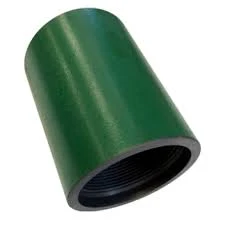- Afrikaans
- Albanian
- Amharic
- Arabic
- Armenian
- Azerbaijani
- Basque
- Belarusian
- Bengali
- Bosnian
- Bulgarian
- Catalan
- Cebuano
- Corsican
- Croatian
- Czech
- Danish
- Dutch
- English
- Esperanto
- Estonian
- Finnish
- French
- Frisian
- Galician
- Georgian
- German
- Greek
- Gujarati
- Haitian Creole
- hausa
- hawaiian
- Hebrew
- Hindi
- Miao
- Hungarian
- Icelandic
- igbo
- Indonesian
- irish
- Italian
- Japanese
- Javanese
- Kannada
- kazakh
- Khmer
- Rwandese
- Korean
- Kurdish
- Kyrgyz
- Lao
- Latin
- Latvian
- Lithuanian
- Luxembourgish
- Macedonian
- Malgashi
- Malay
- Malayalam
- Maltese
- Maori
- Marathi
- Mongolian
- Myanmar
- Nepali
- Norwegian
- Norwegian
- Occitan
- Pashto
- Persian
- Polish
- Portuguese
- Punjabi
- Romanian
- Russian
- Samoan
- Scottish Gaelic
- Serbian
- Sesotho
- Shona
- Sindhi
- Sinhala
- Slovak
- Slovenian
- Somali
- Spanish
- Sundanese
- Swahili
- Swedish
- Tagalog
- Tajik
- Tamil
- Tatar
- Telugu
- Thai
- Turkish
- Turkmen
- Ukrainian
- Urdu
- Uighur
- Uzbek
- Vietnamese
- Welsh
- Bantu
- Yiddish
- Yoruba
- Zulu
pipe bull plug
Understanding Pipe Bull Plugs An Essential Component in Fluid Systems
In the world of fluid systems and pipeline engineering, certain components play critical roles in ensuring safety, efficiency, and functionality. One such component is the pipe bull plug. This seemingly simple device can have significant implications in the realm of fluid transport and containment. In this article, we will explore the design, application, and importance of pipe bull plugs in various industries.
What Is a Pipe Bull Plug?
A pipe bull plug is a type of fitting used to seal the end of a pipe. Typically made from durable materials such as steel, plastic, or brass, these plugs are designed to prevent fluid escape, protect the internal surfaces of pipes from contaminants, and maintain pressure within a closed system. The bull in bull plug refers to the shape of the plug, which often has a rounded or tapered end that fits snugly against the inside of the pipe.
Design and Specifications
Pipe bull plugs are available in various sizes and thread types, which makes them versatile for different applications. The selection of material is equally crucial; for example, steel plugs are often used in high-pressure systems, while plastic plugs may be more suitable for corrosive environments. Moreover, the plugs can come in both standard and custom designs, allowing engineers to choose the most suitable option for their specific needs.
Each bull plug is designed to fit a corresponding pipe size and type, following specific standards such as ANSI, ASME, and ASTM. These standards ensure that the plugs can withstand the operating conditions they will face, such as temperature, pressure, and chemical exposure.
Applications of Pipe Bull Plugs
Pipe bull plugs are used across various industries, including oil and gas, water treatment, chemical processing, and construction. Here are some common applications
1. Sealing Ends of Pipes In any piping system, it is sometimes necessary to close off the ends of pipes temporarily or permanently. Bull plugs provide a reliable method to accomplish this, ensuring that the system remains sealed against leaks.
2. Pressure Testing Before a new piping system is put into operation, it undergoes pressure testing to ensure its integrity and safety. Bull plugs are often used to seal the ends of the pipes during this process to avoid pressure loss and assess the system's strength.
pipe bull plug

3. Maintenance and Repair During maintenance or repairs, certain sections of a pipeline may need to be isolated. Bull plugs help prevent fluid from escaping in these isolated sections, allowing technicians to work safely without the risk of spills or leaks.
4. Flow Control In certain systems, bull plugs can be used to control the flow of fluids. By inserting a bull plug, operators can manage the flow dynamics of a piping system effectively, diverting or redirecting the flow as necessary.
Importance of Pipe Bull Plugs
The importance of pipe bull plugs cannot be understated. They play a vital role in
- Safety By preventing leaks, bull plugs protect personnel and the environment from hazardous spills, which can be especially critical in industries like oil and gas where volatile substances are involved.
- Efficiency Sealed systems function more efficiently, as they maintain consistent pressure and flow rates. Bull plugs help in achieving this, ensuring that operational costs are kept in check.
- Cost-Effectiveness While the upfront cost of bull plugs is relatively low, their use can save substantial amounts of money in the long run by preventing leaks and reducing maintenance costs.
- Flexibility The ability to use bull plugs in different scenarios – from sealing pipe ends to isolating sections for repairs – provides significant flexibility to engineers and technicians working with fluid systems.
Conclusion
In conclusion, pipe bull plugs may appear to be minor components in the complex world of piping systems, but their impact is far-reaching. Their ability to seal, protect, and manage fluid systems makes them indispensable across various industries. Whether you are involved in construction, manufacturing, or a specialized field such as oil and gas, understanding the role of pipe bull plugs can enhance your ability to design, maintain, and operate efficient fluid transport systems. With the right knowledge, the simple bull plug can transform into a fundamental aspect of engineering fluid dynamics.
-
Tubing Pup Joints: Essential Components for Oil and Gas OperationsNewsJul.10,2025
-
Pup Joints: Essential Components for Reliable Drilling OperationsNewsJul.10,2025
-
Pipe Couplings: Connecting Your World EfficientlyNewsJul.10,2025
-
Mastering Oilfield Operations with Quality Tubing and CasingNewsJul.10,2025
-
High-Quality Casing Couplings for Every NeedNewsJul.10,2025
-
Boost Your Drilling Efficiency with Premium Crossover Tools & Seating NipplesNewsJul.10,2025







